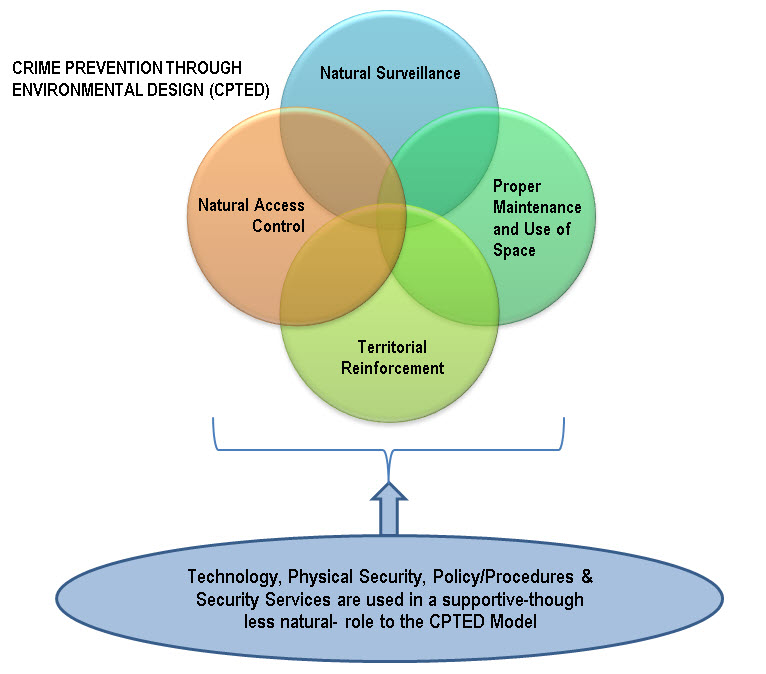Crime Prevention Through Environmental Design…
Secured Design, LLC is a practitioner of the security design principle known as Crime Prevention Through Environmental Design (CPTED) and infuses the concepts into its evaluations, recommendations and designs. CPTED’s operant philosophy is based on the assumption that the “…proper design and effective use of the built environment can lead to a reduction in fear and the incidence of crime and to an improvement in the quality of life.” The focus of CPTED is to achieve a level of security using spatial relationships and design elements as a means to engender natural control, natural surveillance and territorial behaviors on the part of the occupants of the space (including both legitimate and illegitimate occupants). CPTED permits the achievement of a security objective more as a by-product of good spatial design and use which is often imperceptible to the users of the space. The CPTED Model consists of four overlapping strategies and uses technology methods (more typically thought of as being sole-purposed for security) as a means to support or reinforce the CPTED motif.

Natural Surveillance: This strategy increases the perception or reality that people can be seen by others. Potential offenders are made to feel at greater risk of scrutiny; while legitimate users have greater opportunities to see offenders or be seen by more benevolent occupants of the space.
Natural Access Control: Natural Access control attempts to clearly and tactilely define entry into a space and ensures a clear definition of the transition from public to private through the use of design elements and spatial relationships. Because this transition is apparent to both legitimate and illegitimate occupants, their intent becomes more apparent to all.
Territorial Reinforcement: This strategy attempts to extend perceived ownership beyond the actual stakeholder space. It can also buffer a building between public and private space, better ensures the stakeholder reports or reacts to illegitimate users and can even provide a delay barrier between an attacker and his victim.
Proper Maintenance and Use of Space. Effective maintenance and continued use of a space as originally intended and designed is crucial to ensuring the ongoing effectiveness of the CPTED strategies. Well-managed and maintained spaces have greater return on investment and fewer issues with personal safety and facility security.
————————-
CPTED strategies and the project objectives are most effective and least costly when implemented during the planning stages of the facility (preferably in the programmatic or pre-program phase of the design effort). The concepts should be infused into the design program and, as the plan evolves, the design team should be vigilant for design changes that may impact the objectives.
CPTED is also considered for existing properties. Attention to landscaping, lighting, entry point celebration, pedestrian pathways and signage are among the more common CPTED considerations in existing properties.
Learn about: Who We Are Our Experience Our Services Contact Us
